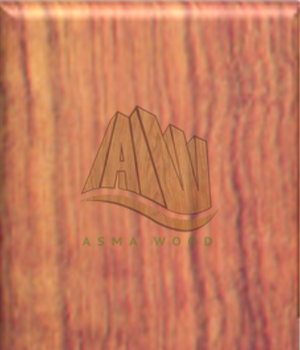NATURAL DURABILITY
Jackson (1965) recorded that a consignment of 40 test sticks were all destroyed within 6 years and gave an average life span of 3.1 years.
The timber is thus classified as moderately durable. It is not durable in contact with the ground because it is readily attacked by termites but is slightly
more resistant to fungi.
PRESERVATIVE TREATMENT
It is difficult to treat with preservatives.
TEXTURE
Texture is moderately fine and even, with shallowly interlocked grain.
STRENGTH PROPERTIES
The timber falls into Strength Group A (Burgess, 1958) or SG3 (MS 544: Part 2:2001).
Strength Properties of PauhKijang (I.Malayana)
| Test Condition |
Modulus of Elasticity(MPa) |
Modulus of Rupture(MPa) |
Compression parallel to grain (MPa) |
Compression perpendicular to grain (MPa) |
Shear strength(MPa) |
| Green |
- |
- |
59.0 |
5.45 |
13.2 |
| Air dry |
- |
- |
70.5 |
12.65 |
17.0 |
MACHINING PROPERTIES
It is slightly difficult to work when green and is difficult when dry. Planing is difficult but the planed surface is moderately smooth with some grain pick-up
in the radial face.
Machining Properties of PauhKijang (I.Malayana)
| Test Condition |
Sawing |
Planning |
Boring |
Turning |
|
Re Sawing |
Cross Cutting |
Ease of planing |
Quality of finish |
Ease of boring |
Quality of finish |
Ease of Turning |
Quality of finish |
| Green |
Slightly difficult |
Slightly difficult |
Difficult |
Tangential smooth, radial rough due to picking up of grain |
Easy |
Rough |
- |
- |
| Air Dry |
Difficult |
Difficult |
Difficult |
Moderately Smooth |
- |
- |
- |
- |
Nailing Property
The nailing property is rated as poor.
Air drying
The timber seasons slowly with moderate end-checking, surface-checking, insect and fungal attacks as the main sources of degrade.
Slight bowing and cupping are also recorded. 13 mm thick boards take approximately 5 months to air dry, while 38 mm thick boards take 7 months.
KILN-DRYING
Kiln Schedule C is recommended.
Kiln Schedule C
| Moisture Content(%) |
Temperature (Dry Bulb) |
Temperature (Wet Bulb) |
Relative Humidity (%)(approx.) |
|
F
|
F
|
F
|
F
|
|
| Green |
105 |
40.5 |
101 |
38.0 |
85 |
| 60 |
105 |
40.5 |
99 |
37.0 |
80 |
| 40 |
110 |
43.5 |
102 |
39.0 |
75 |
| 35 |
110 |
43.5 |
100 |
38.0 |
70 |
| 30 |
115 |
46.0 |
103 |
39.5 |
65 |
| 25 |
125 |
51.5 |
109 |
43.0 |
60 |
| 20 |
140 |
60.0 |
118 |
47.5 |
50 |
| 15 |
150 |
65.5 |
121 |
49.0 |
40 |
SHRINKAGE
Shrinkage is rather high, with radial shrinkage averaging 2.7% and tangential shrinkage averaging 4.3%.
DEFECTS
Pauhkijang is free from defects although mature logs are liable to be hollow. The living tree is subject to borer attacks.
USES
The timber is not often exploited due to the high buttresses and poor form. It is also very hard and difficult to work. The timber is, however, suitable
for heavy construction if treated, piles, railway sleepers, heavy duty furniture, fender supports, flooring (heavy traffic), door and window frames and sills,
posts, beams, joists, rafters, telegraphic and power transmission posts and cross arms, tool handles (impact), staircase (carriage, newel, riser, stringer, tread,
bullnose, round end and winder) and vehicle bodies (framework and floor boards). The dark streaky core is suitable for decorative works, panelling, mouldings,
joinery and cabinet making.
REFERENCES
Burgess, H.J.1958. Strength Grouping of Malaysian Timbers. Malayan Forest Service Trade Leaflet No.25. The Malaysian Timber Industry Board and Forest Research
Institute Malaysia, Kuala Lumpur. 15 pp.
Jackson, W.F.1965. The Durability of Malayan Timbers. Mal. For. Ser. Trade Leaflet No.28.
Menon, P.K.B. 1986. Uses of Some Malaysian Timbers. Revised by Lim, S.C.Timber Trade Leaflet No.31. The Malaysian Timber Industry Board and Forest Research
Insitute Malaysia, Kuala Lumpur.48 pp.
MS 544: Part 2: 2001: Code Of Practice For Structural Use Of Timber. Permissible Stress Design of Solid Timber.
Wong,T.M.1982. A Dictionary of Malaysian Timbers. Revised by Lim, S.C.& Chung, R.C.K. Malayan Forest Record No.30. Forest Research Institute Malaysia Kuala
Lumpur. 201 pp.
Zaitun Said. 1985. Malaysian Timbers - PauhKijang. Malaysian Forest Service Trade Leaflet No.99. The Malaysian Timber Industry Board and Forest Research
Institute Malaysia, Kuala Lumpur. 4 pp.

